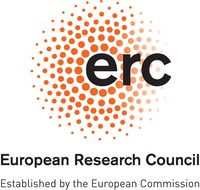The response of the global carbon cycle to climate change is one of the largest unknowns in the climate system. Currently, roughly half of the CO2 emissions from fossil fuel burning is stored in the ocean and the terrestrial biosphere [Quéré et al., 2015] and these sinks have kept pace with increasing CO2 emissions. Compared to the ocean, the terrestrial biosphere sink is more variable from year-to-year, since it is sensitive to climate variations and extremes [Beer et al., 2010; Reichstein et al., 2013; Ahlström et al., 2015]. Terrestrial carbon exchange with the atmosphere is characterised by two almost cancelling gross fluxes: photosynthesis (GPP) and respiration. Both terms are sensitive to climate variations like temperature and precipitation. A better understanding of this sensitivity is vitally important for future climate predictions [Bonan, 2008]. Unfortunately, GPP cannot be measured directly, and indirect methods have to be used to estimate the gross biosphere fluxes (GPP and respiration) separately [Reichstein et al., 2005]. Here, COS might play an important role.
(from [Campbell et al., 2008]). Drawdown of CO2 and COS in the lower atmosphere measured with aircraft during the Intercontinental Chemical Transport Experiment North America (INTEX-NA), which strongly suggest that COS is a better indicator of GPP than of Net Primary Productivity (NPP). According to the study: “the most intriguing application may be to recover GPP and respiration information by inverse analysis of atmospheric COS measurements”.
The uptake of COS by vegetation is directly linked to CO2 uptake. It has been demonstrated that this process is essentially a one-way process at the leaf scale [Sandoval-Soto et al., 2005; Seibt et al., 2010; Stimler et al., 2010]. Measurements of atmospheric COS variations might therefore be useful in separating the photosynthetic and respiratory terms that cannot directly be derived from CO2 flux and mixing ratio measurements [Campbell et al., 2008; Blonquist et al., 2011; Asaf et al., 2013; Berry et al., 2013]. Indeed, the clear COS depletion over continents (see Figure) can be related to uptake by the terrestrial biosphere. This drawdown of COS over continents (at 250 hPa) has even been observed from space by the Michelson Interferometer for Passive Atmospheric Sounding (MIPAS) onboard the Envisat satellite (2002–2012) [Glatthor et al., 2015]. However, recent measurements indicate that (i) exchange of COS at soil surfaces can be bidirectional [Billesbach et al., 2014] (ii) the leaf relative uptake of COS and CO2 is not constant [Stimler et al., 2010], (iii) the relative uptake varies with light level [Maseyk et al., 2014], and (iv) COS is also taken up by plants during the night [Berkelhammer et al., 2014]. Moreover, it was found that COS emissions may occur through soil abiotic processes stimulated by sunlight and temperature [Whelan and Rhew, 2015]. Triggered by these observations, the land–atmosphere exchange of COS is currently an active field of research, from both an observational [Whelan and Rhew, 2015; Sun et al., 2016; Whelan et al., 2016] and modelling perspective [Sun et al., 2015; Ogée et al., 2016].

